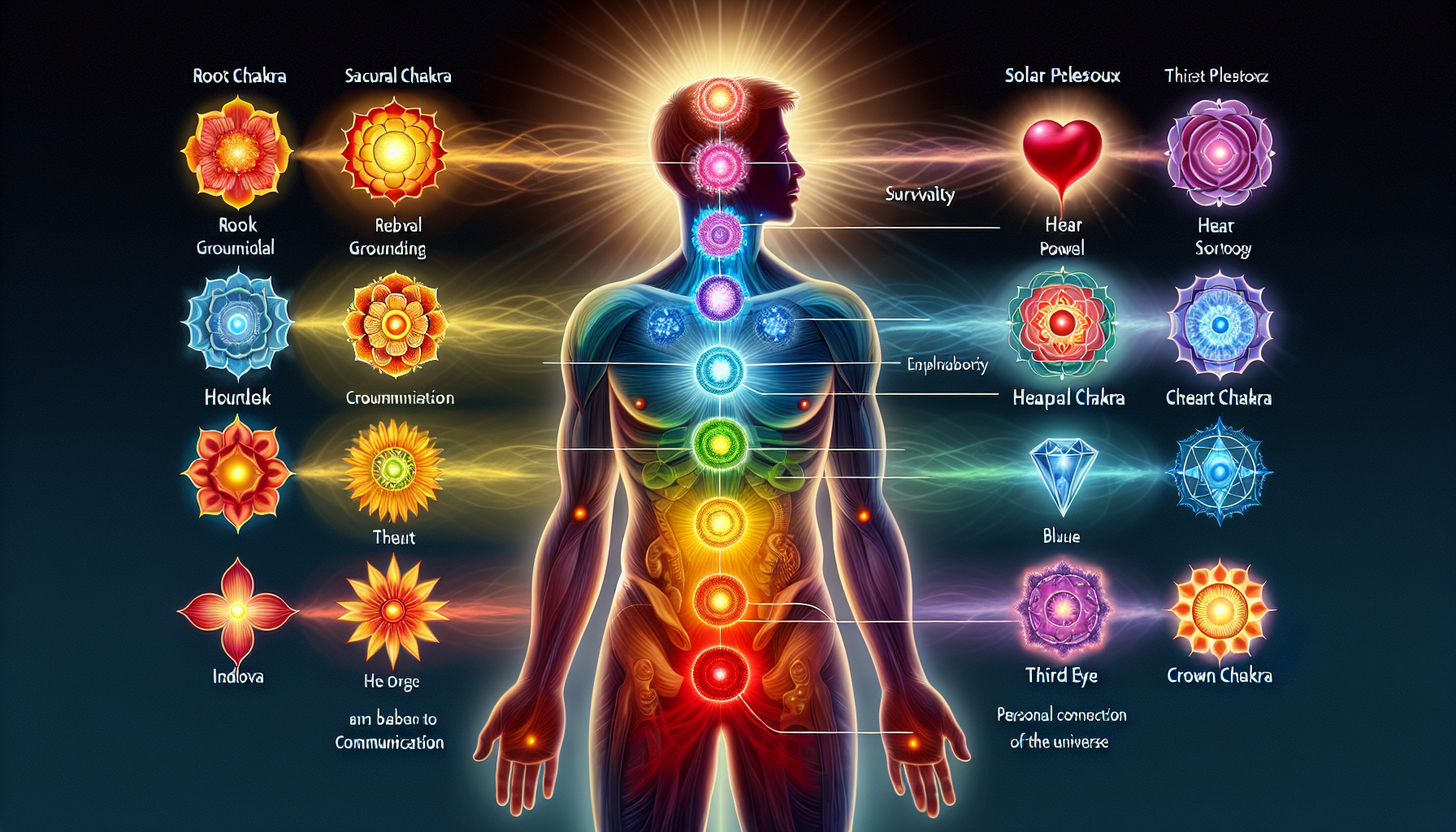Chakras are often discussed in the context of holistic health, spiritual healing, and energy work. These energy centers, rooted in ancient Indian traditions, are believed to influence physical, emotional, and spiritual well-being. Understanding and balancing your chakras can lead to a more harmonious and fulfilling life.
What Are Chakras?
The term “chakra” comes from the Sanskrit word for “wheel” or “disk.” In the context of the human body, chakras are seen as spinning wheels of energy located along the spine, from its base to the crown of the head. Each of these spinning wheels corresponds to specific nerve bundles and major organs. There are seven primary chakras, each with its own unique attributes and associations.
The Seven Primary Chakras
- Root Chakra (Muladhara)
- Location: Base of the spine
- Color: Red
- Element: Earth
- Attributes: Grounding, survival, stability
- An imbalanced Root Chakra can manifest as anxiety, insecurity, or physical issues with the legs and lower back.
- Sacral Chakra (Svadhisthana)
- Location: Lower abdomen
- Color: Orange
- Element: Water
- Attributes: Creativity, pleasure, sexuality
- An imbalanced Sacral Chakra can lead to emotional instability, fear of change, or reproductive issues.
- Solar Plexus Chakra (Manipura)
- Location: Upper abdomen
- Color: Yellow
- Element: Fire
- Attributes: Confidence, power, control
- An imbalanced Solar Plexus Chakra can cause low self-esteem, anger, or digestive problems.
- Heart Chakra (Anahata)
- Location: Center of the chest
- Color: Green
- Element: Air
- Attributes: Love, compassion, connection
- An imbalanced Heart Chakra can result in feelings of loneliness, bitterness, or respiratory issues.
- Throat Chakra (Vishuddha)
- Location: Throat
- Color: Blue
- Element: Ether
- Attributes: Communication, truth, expression
- An imbalanced Throat Chakra can cause communication problems, fear of speaking, or throat issues.
- Third Eye Chakra (Ajna)
- Location: Forehead between the eyes
- Color: Indigo
- Element: Light
- Attributes: Intuition, insight, imagination
- An imbalanced Third Eye Chakra can lead to confusion, lack of focus, or headaches.
- Crown Chakra (Sahasrara)
- Location: Top of the head
- Color: Violet or white
- Element: Thought
- Attributes: Spirituality, enlightenment, connection to the divine
- An imbalanced Crown Chakra can manifest as a disconnection from reality, lack of purpose, or cognitive issues.
Balancing Your Chakras
Balancing your chakras involves various practices aimed at ensuring the smooth flow of energy through these centers. Here are some common methods:
- Meditation: Focused meditation on each chakra can help in balancing them. Visualizing the color and energy of each chakra can assist in this process.
- Yoga: Specific yoga poses are designed to open and balance the chakras. For example, the Mountain Pose is beneficial for the Root Chakra, while the Bridge Pose helps the Heart Chakra.
- Diet and Nutrition: Consuming foods that correspond to each chakra’s color can aid in their balance. For instance, red foods like tomatoes and strawberries can support the Root Chakra, while green leafy vegetables benefit the Heart Chakra.
- Crystals and Gemstones: Different crystals are believed to resonate with different chakras. Amethyst can aid the Crown Chakra, while Citrine is beneficial for the Solar Plexus Chakra.
- Aromatherapy: Essential oils can be used to balance chakras. Lavender oil is often used for the Crown Chakra, and sandalwood for the Root Chakra.
- Affirmations: Positive affirmations related to each chakra can help in restoring balance. For instance, affirming “I am grounded and secure” can support the Root Chakra.
Conclusion
Understanding and balancing your chakras is a journey toward achieving overall well-being. By incorporating practices that align and harmonize these energy centers, you can enhance your physical health, emotional stability, and spiritual growth. Whether through meditation, yoga, or other holistic approaches, the path to balanced chakras is a path to a more balanced life.
